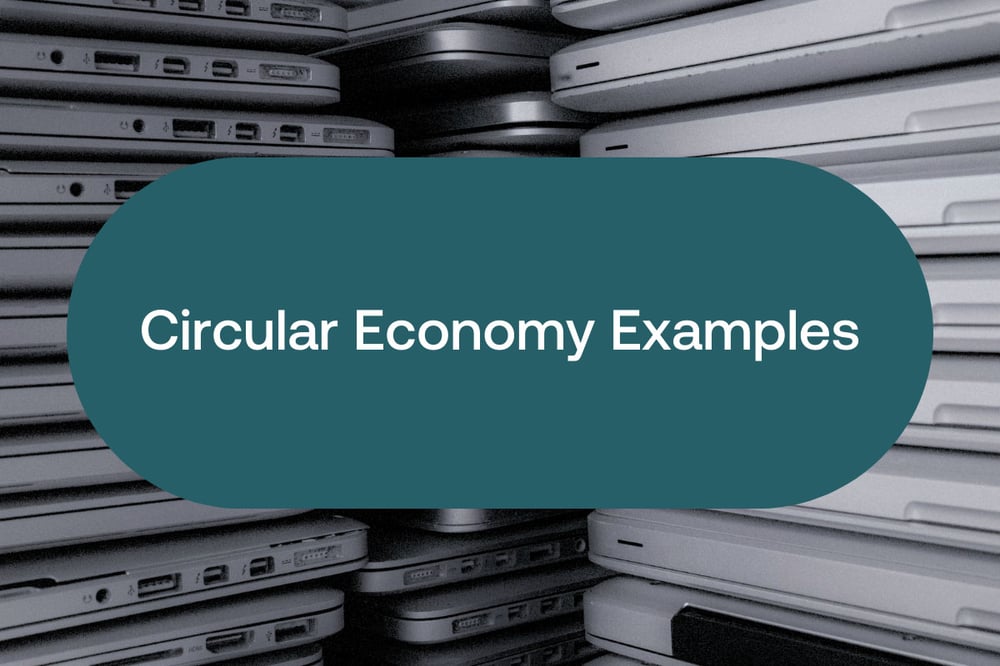One of the major reasons why the access economy has progressively grown in popularity is generational differences and changes in trends. In an article published back in 2015, McKinsley predicted that two of the five driving forces for consumer behavioral changes in the next 15 years would be the changing face of the consumer and new patterns in personal consumption. The changing face of the consumer includes everything from urbanization to millennials becoming the majority of consumers, while new patterns in personal consumption focus heavily on the growth of the sharing economy.
Six years after the article was published, it’s safe to say that they weren’t too far off. Another study found that 78% of millennials would choose to spend their money on experiences rather than things. In this article, we take a look at how the access economy will shape the way people consume.
Access economy in the sports & leisure industry
The idea of renting recreational and sports goods has been around for a long time, and the change of attitude towards consumption and the focus shifting from ownership to accessibility has only strengthened the industry.
Of course, among the different factors in the past years that have affected all industries and consumer behavior, a prominent one has been the pandemic. It has left its own mark on how people perceive the outdoors and experience nature: the revenue of recreational and sports goods rentals in Germany alone was $137,5 million dollars back in 2014 - by 2024, it's forecasted to generate over $500 million dollars in revenue.
People don’t find it necessary to spend thousands of dollars on equipment, waste storage space, and travel with heavy luggage in order to enjoy an outdoor experience - especially when the equipment is only going to be used a few times a year.
A great industry example is Kit Lender. The Vermont-based business offers affordable rental kits for snow & ski activities, as well as camping & hiking equipment. They recognized that outdoor activities might seem off-putting, especially if you can’t afford the same pro-level equipment for a one-time use. After getting started back in 2014, they now rent out & ship the latest gear all over the US.
Kit Lender is not alone - while bike and ski rentals are still the most common ones, there’s an increase in water sports, camping, and climbing gear shops. The increase in popularity only supports the trends and values we’re seeing with consumers, meaning that rental shops are only getting started. What’s most interesting to see is that big retailers are also seeing an opportunity to rent out their gear rather than just selling it - more about this later.
Access economy in the fashion industry
Sustainability is, without a doubt, one of the biggest driving forces that has contributed to the change in retail trends and consumer behavior. The fashion industry has also taken a turn for the better.
Since 2000, the production of clothes has doubled, while the time we spend wearing clothes has dropped by 40%. This is a huge problem that the consumers haven’t left unnoticed - even one of the biggest fast-fashion brands in the world, H&M, has taken a step towards a better alternative by piloting a fashion rental program and releasing a Conscious clothing line, which uses recycled materials.
In addition to the huge fashion houses incorporating sustainable options into their already-existing offering, there are new brands and services popping up with similar concepts. Rent the runway, for example, offers designer clothing for rent using subscription-based plans. Not only good for sustainable reasons, services like these offer people access to more high-end and on-trend clothing that would otherwise be unattainable. As a bonus, your closet won’t get cluttered with last-season pieces that you don’t use anymore.
Another great example is the use of clothes. According to Thredup, second-hand clothes and gear represent a $28 billion business that’s expected to more than double to $64 billion by 2024. Well-known brands like Globetrotter and Patagonia already have second-hand branches in their stores, allowing them to receive worn pieces that they can repair and recycle. While clothing retailers might fear entering the second-hand market and offering something other than the latest trends, doing so won’t only result in monetary benefits but also an increase in the longevity of the products and a decrease in overall consumption. It’s truly a win-win situation for business, consumers, and the planet.
Access economy in the home improvement industry
Renting out tools has always been more of a B2B practice, with peer-to-peer marketplaces and share-economy-based apps taking care of individual customers. Recently, however, the B2C industry of renting out tools has taken a turn and grown in popularity. Of course, this isn’t a new concept, especially not for Home Depot, who started their tool rental business back in 1995. Now, there are local, smaller businesses that offer everything from thermal cameras to steamers, with easy pick-ups and drop-offs from and to your nearest automated pick-up/drop-off lockers.
Especially since the beginning of COVID-19 and the mandatory lockdowns, people have been forced to re-evaluate the way we see and function in our spaces. There are countless tutorials and articles published on how to create an ergonomic home office, a compact home-workout nook, a zen bedroom space where you can really relax, and so on. On top of this, people in general just have much more free time, which has led to people taking on new hobbies, whether it would be painting, baking, or creating new home decor for the house. But what does this all have in common? DIY.
Home Depot has increased its overall sales by 23.2%, compared to the same period in 2019, while the UK saw almost a 50% rise in online home improvement sales compared to 2019. While the sales are increasing thanks to these new-found hobbies and home improvement projects, people aren’t still necessarily keen on buying the rental equipment and tools they need. Just like with sports equipment, not only is buying tools extremely expensive, it takes up space and, realistically, won’t get used that much in the long run.
While the boom of DIY projects and hobbies might decrease as we move on, the realization that home improvements and smaller projects that require some heavy-duty equipment can be done easily and on a budget will remain.
New opportunities with renting
We've taken a look at how access-economy is affecting different industries from the consumers' point of view, but what does it mean for retailers? As we've already witnessed, retailing and renting don't cancel each other out - quite the contrary, having both can bring more value than just having one or the other. So let's take a look at what kind of new opportunities can adding a rental business model to a retail one bring.
Keeping your business afloat by staying on top of trends
The world is constantly evolving, so it’s important to stay on top of the different trends and changes in consumer behaviors. We’ve all heard the stories - from iTunes albums to Spotify, Blockbuster to Netflix, and so on. Companies that are reluctant to change usually end up struggling in the long run or, even worse, seize to exist.
A great industry-related example is Intersport. As one of the biggest names in the sports retail industry, Intersport started its operations back in 1968 and now has over 6000 stores in 57 countries. So why would one of the biggest sports retailers decide to move to renting?
They saw an opportunity to expand and serve a customer segment that they hadn’t served before. This way, they’re not only reaching a new audience, but they are also ahead of this change in consumer behavior. By offering high-quality sports equipment as well as clothing for rent, which can be delivered straight to the customer’s hotel in over 14 countries, they secured their status as one of the best sports services in the retail industry, as well as in the rental industry.
Reaching new target audiences through expanded services
No matter what the industry is, high-quality gear and clothes can get extremely expensive and feel like an insider club for professionals and people who can afford them. By expanding products and services, you’re opening doors to new customer segments and offering them the same experiences and inclusivity as other customers without breaking the bank or cluttering their spaces.
Whether your customers’ motivation for renting equipment rather than buying it for financial reasons, convenience, or sustainability, giving an alternative option to purchasing means serving an even larger customer base. What’s even better - renting is one of the best ways to increase brand awareness and introduce your customers to products and services. By being able to try out and test out different equipment or clothing, the customer becomes a potential buyer. If they get into the equipment, they might buy it right from you, or while picking up their rental equipment, they might consider purchasing other add-ons like water bottles and so on, which is always good for a business.
Profitability
At the end of the day, the biggest factor behind any changes a business makes is the bottom line. So, is offering additional rental services profitable for a retail business? Short answer - yes, if you do it right. With added rental operations, you can have a lucrative business on your hands that doesn’t overtake but rather supports the retail side. Especially considering the fact that rent-to-buy is one of the most effective ways to push customers from consideration to purchase.
Both the retail and rental sides can be extremely profitable: by combining the two, you’re opening up your business to new revenue streams and new customer segments.
Summary
There is no clear winner between which is better and more profitable: rental or retail businesses. It is actually pointless to create confrontation between the two business models. However, taking the latest trends and world situations into account, it becomes evident that a larger shift is happening in the way we consume goods and services.
Rather than dividing the two, it makes more sense to explore ways to combine the benefits of the business models. By doing this, you’re not only making sure your business is prepared for the future; you’re opening yourself up to new opportunities and larger audiences while offering more accessible activities for everybody to experience.









